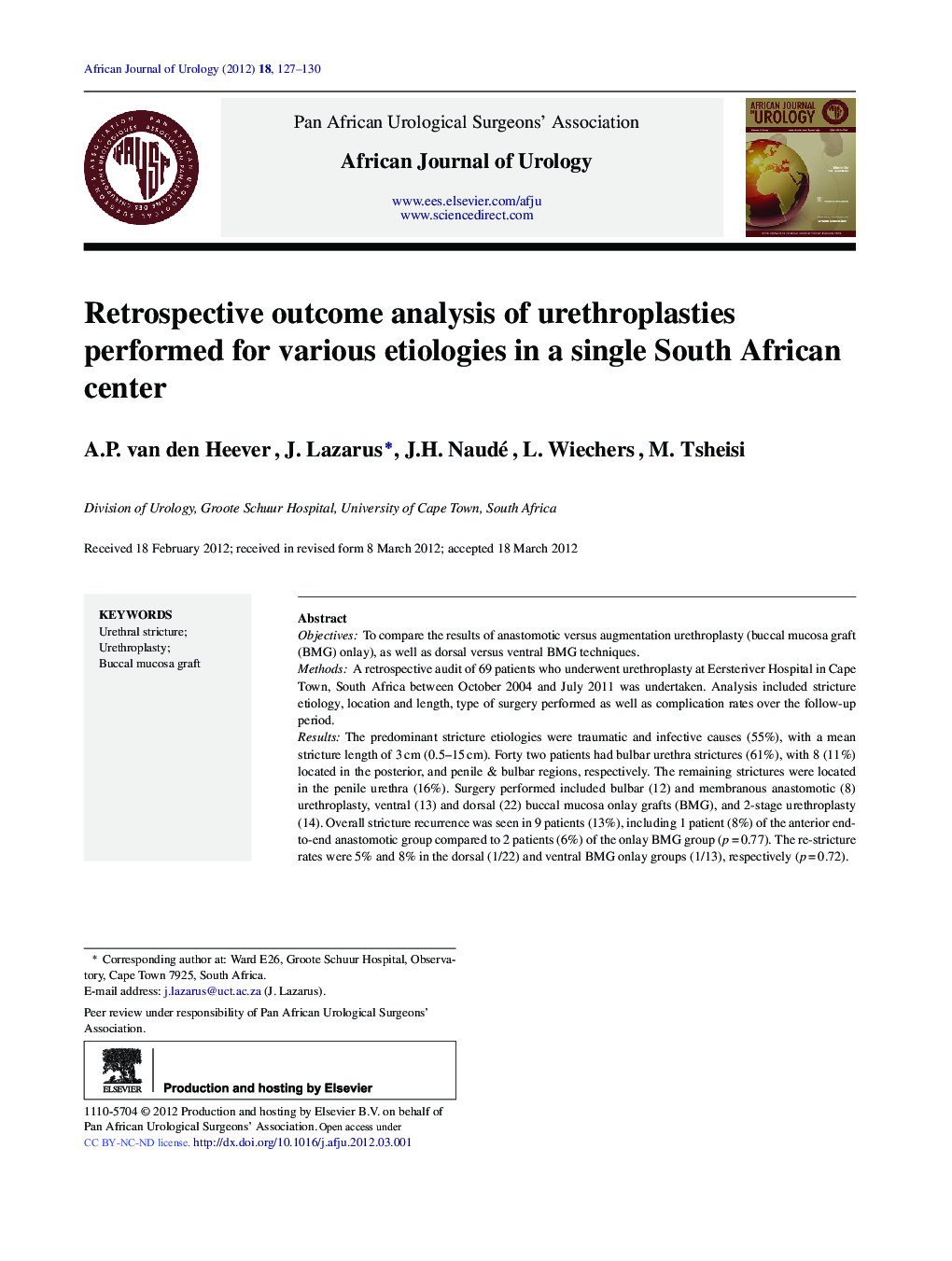| Article ID | Journal | Published Year | Pages | File Type |
|---|---|---|---|---|
| 4267758 | African Journal of Urology | 2012 | 4 Pages |
ObjectivesTo compare the results of anastomotic versus augmentation urethroplasty (buccal mucosa graft (BMG) onlay), as well as dorsal versus ventral BMG techniques.MethodsA retrospective audit of 69 patients who underwent urethroplasty at Eersteriver Hospital in Cape Town, South Africa between October 2004 and July 2011 was undertaken. Analysis included stricture etiology, location and length, type of surgery performed as well as complication rates over the follow-up period.ResultsThe predominant stricture etiologies were traumatic and infective causes (55%), with a mean stricture length of 3 cm (0.5–15 cm). Forty two patients had bulbar urethra strictures (61%), with 8 (11%) located in the posterior, and penile & bulbar regions, respectively. The remaining strictures were located in the penile urethra (16%). Surgery performed included bulbar (12) and membranous anastomotic (8) urethroplasty, ventral (13) and dorsal (22) buccal mucosa onlay grafts (BMG), and 2-stage urethroplasty (14). Overall stricture recurrence was seen in 9 patients (13%), including 1 patient (8%) of the anterior end-to-end anastomotic group compared to 2 patients (6%) of the onlay BMG group (p = 0.77). The re-stricture rates were 5% and 8% in the dorsal (1/22) and ventral BMG onlay groups (1/13), respectively (p = 0.72).ConclusionsBoth anastomotic and BMG onlay techniques are safe and effective surgical options. Similar outcomes were demonstrated between ventral and dorsal BMG onlay groups.
